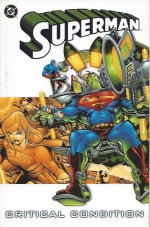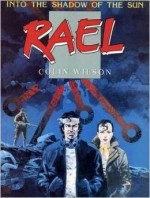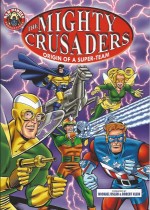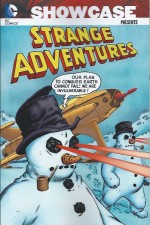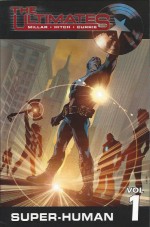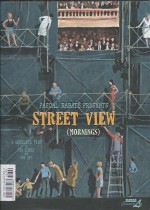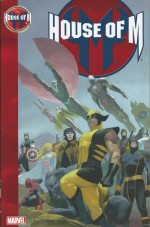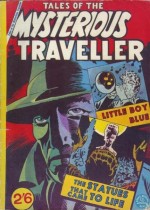In keeping with my self-imposed Holiday tradition here’s yet another selection of British Annuals selected not just for nostalgia’s sake but because it’s my blog and I just want to…
After decades when only American comics and nostalgia items were considered collectable or worthy, these days the resurgence of interest in home-grown comics and stories means there’s a lot more of this kind of material out there and if you’re lucky enough to stumble across a vintage volume, I hope my words can convince you to acquire it.
Topping my Xmas wish-list would be further collections from those fans and publishers who have begun to rescue this magical material from print limbo in affordable new collections…
Great writing and art is rotting in boxes and attics or the archives of publishing houses, when it needs to be back in the hands of readers once again. As the tastes of the public have never been broader and a selective sampling of our popular heritage will always appeal to some part of the mass consumer base, let’s all continue rewarding publishers for their efforts and prove that there’s money to be made from these glorious examples of our communal childhood.
The Sparky Book 1975
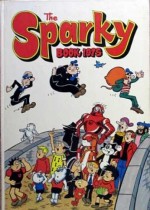
By many and various (D.C. Thomson)
Retroactively awarded ISBN: 978-0-85116-103-7
For many British readers – whether comics fans or not – the Holiday Season means The Beano Book, but publisher D.C. Thomson produced a wide range of weekly titles over the decades, most of which also offered superb hardcover annuals so this year I’ve opted to feature one of the lesser lights – although as always, the quality and invention of the work is hard to deny…
Way back when, most annuals were produced in a wonderful “half-colour†which British publishers utilised in order to keep costs down. This was done by printing sections or “signatures†of the books with only two plates, such as Cyan (Blue) and Magenta (Red) or Yellow and Black.
The sheer versatility and range of hues provided was simply astounding. Even now this technique inescapably screams “Holiday Extras†for me and my aging contemporaries. This particular example comes from the barely-yesterday year of 1974 (and would have hit shop shelves in late August) when printing technology had advanced to such a degree that a goodly proportion of the book could cost-effectively be produced in full colour.
Sparky launched as a weekly comic on January 23rd 1965, intended for a slightly younger audience than Beano or Dandy and after 652 issues merged with The Topper (July 9th 1977 issue).
As was often the case its Annual outlived it, generating fun-filled hardback albums from 1965 until 1980, all featuring extra-long or special tales starring its most popular strips.
Again, as is so often the case, my knowledge of the creators involved is appallingly sub-standard – especially in regard to the writers – but I’ll hazard my usual wild guesses in the hope that someone with more substantial information will correct me when I err…
The manic mirth begins with Vic Niell’s ‘Peter Piper’ whose “Magic Pipe Brings Things to Lifeâ€.
In this tale the musical mysticism causes chaos by animating a giant dog on a poster which our hero compounds thereafter by having to zap a lot of burly folks into existence to help him catch it again, after which “Britain’s Brightest Coppers†Cedric and Frederic take on a brace of bandits dressed as policemen in an extended and hilarious ‘L Cars’ escapade illustrated by Bill Hill.
A dramatic full-colour painted fact-feature then eulogizes the ancient Vikings in ‘Faces of Man: North Man’ (by an artist I can’t identify) after which the inimitable Bill Ritchie provides his first cartoon contribution with ‘Barney Bulldog and Young Ben’ who enjoy a spot of indoor football whilst ‘Dreamy Daniel – Who Does He Think He Is?’ – by a fill-in artist also unknown to me – details the foolish fantasist’s muddling up fixing a TV aerial with scaling Everest.
Gordon Bell then limns ‘Spoofer McGraw – He Tells Tall Tales’ as the fibber regales his buddy Bo with the ludicrous story of how crash helmets were invented whilst ‘Hungry Horace’ (by George Drysdale?) is just for once innocent of scoffing all the food in the family picnic hamper before ‘Keyhole Kate’ (maybe Drysdale again rather than original artist Allan Morley) devises a foolproof gimmick to facilitate her nosy voyeurism but becomes a victim of her own ingenuity…
Jim Petrie’s ‘We Are the Sparky People’ offers an unedifying peek behind the scenes of comics production and a warning glimpse at the seedy inner workings of the editorial department on a day when the office mice run riot, after which another full-colour section spotlights the nation’s most infallible espionage agent as ‘I Spy… and the Master Phoney!’ (by Brian Walker or John Fox, perhaps?) pits the diminutive wonder against chameleonic Chinese rogue Wong Numba…
Following a little brain-teasing with ‘The Great Sparky Join-the-Dots Game’, John Geering delights with a boisterous outing for ‘Pansy Potter, the Strong Man’s Daughter’ as her long-suffering folks enjoy a quiet holiday by staying home after packing their child off to the seaside…
‘Faces of Man: South Man’ celebrates the prowess of the legendary Zulu warriors before Ritchie enjoys a spot of fourth-wall busting canine metamorphosis in ‘Barney Bull’ and Bob Webster (or a rather good impersonator) delights in an extended tale of every fan’s favourite alien robot in ‘A Tale of Two Klankys’ wherein the well-meaning mechanoid aids little Ernie and Sis Huggins in winning a fancy-dress prize and nabbing some conniving kidnappers…
Malcolm Judge’s ‘Ali’s Baba’ starred an invisible genie tasked with acting as super-nannie to the world’s most trouble-prone toddler and here the ill-starred ifrit exhausts himself after the pestiferous kid smuggles a puppy into the house after which ‘Jumbo and Jet’ (artist unknown but possibly Mike Green?) details how the elephant and mouse duo have a holiday from hell in a seaside chalet…
Probably by the same illustrator is ‘Snip and Snap the Tearaway Terriers’ who take drastic action against an owl interrupting their sleep whilst archest of enemies ‘Puss and Boots’ rejoice in full-colour forays by Geering and ‘Hungry Horace in 2000AD’ speculates on greed and nosh-cadging in the World of Tomorrow.
The rainbow hues continue as the civilisation and accomplishments of China are celebrated in ‘Faces of Man: Eastern Man’, wish-granting ‘Mr. Bubbles’ (Pamela Chapaeu and/or James Fox) turns barnyard swine into gourmet clubbers and ‘A Typical Day in the Life of Peter Piper’ sees the well-meaning lad’s animations generate a rollercoaster’s worth of trouble and thrills…
Back in black and red ‘Spoofer McGraw’ tells more tall tales to Bo – this time regarding the shocking truth behind puppets and marionettes – after which ‘Barney Bulldog’ finds his new job actually costs him cash and ‘Keyhole Kate’ invades a castle and is hoist on someone else’s petard…
Sports day is just another opportunity for a cat-and-dogfight to ‘Puss and Boots’, after which ‘L Cars in France!’ sees the boobies in blue export their ineptitude to Paris whilst ‘Pansy Potter’s Horoscope’ gives her dad plenty of warning about forthcoming disasters on their next holiday together…
‘Invisible Dick’ by Tony Speer finds boy-hero Dick Dixon searching for his real cloaking torch whilst tackling a bullying thug after which ‘Ali’s Baba’ takes up the tactics of a highwayman after being read Dick Turpin at bedtime and ‘Puss and Boots’ indulge in underwater warfare in a backyard swimming pool before ‘Presenting… Sirs View of the Sparky People’ heralds another full-colour section with candid comedic CCTV footage…
Quirky but uncredited ‘The Space Kids’ then reveals how four boys with a stunning secret aid extraterrestrial junk man Zarro after the trader unwittingly collects an occupied lunar module as stellar scrap before a final ‘Faces of Man: Western Man’ describes the life of native American tribes before the White Man came and everything wraps up with another ‘Mr. Bubbles’ escapade as young Wendy wishes she could do handstands like the other girls and soon the entire town is walking upside down…
Bright, breezy and supremely entertaining, this is another unbeatable blend of festive fun and thrills to delight kids of all ages.
© D.C. Thomson & Co. Ltd. 1974
My Enid Blyton Book (1948)

By Enid Blyton, illustrated by Grace Lodge (Latimer House/Marks & Spencer, Ltd.)
No ISBN
Enid Mary Blyton (August 11th 1897-28th November 1968) was English and wrote lots of stories for children – sometimes as many as fifty books a year.
Despite being controversial for much of her career she quickly became part of the very fabric of growing up British and her name became synonymous with childhood. In 1948 another bastion of empire – high-end retail giant Marks and Spencer – began an association with the author which produced three stunning annual collections of fabulous, beautifully illustrated gentle fantasy short stories. This was the first of them.
My Enid Blyton Book 1948 featured a selection of previously told tales taken from the weekly children’s periodical Sunny Stories for Little Folks between 1927 and 1934, lavishly and enchantingly illustrated here in the traditional two-colour process by the amazingly gifted Grace Lodge.
An astute businesswoman, the author had already recycled the material once as two thirds of the 1934 compilation tome The Red Pixie Book (illustrated then by Kathleen Nixon).
A lexicon of clever, charming and funny yarns for youngsters, the book commenced with ‘Who Stole the Crown?’ (from SStfLF #174, September 1933) wherein the King of Pixieland’s summer crown was purloined by persons or creatures unknown and the appalled ruler was forced to turn to a rather smug chap called Little-Cap who used deductive reasoning to ferret out the culprit…
Next follows the salutary tale of a gnome named ‘Clickety-Clack’ (#90, March 1930) whose gruffly unpleasant manner was cured in a trice following a shocking encounter with an aeroplane, after which human children Jill and Norman went on the adventure of a lifetime.
Whilst walking in the woods their pet Puppy-Dog Pincher was turned into a mouse by an outraged brownie. Thankfully a kindly Pixie maid lent them ‘The Little Walking House’ (AKA ‘The House with Six Legs’ from SStfLF #190, May 1934) so that they could travel to the sky castle of High-Hat the Giant and secure a cure. Of course it wasn’t quite as simple as all that…
‘Gooseberry Whiskers’ (#92, April 1930) is a delightful “just-so†story revealing how a thieving gnome trying to hide stolen caterpillar hairs accidentally gave a simple garden fruit bristles and ‘The Pixie Who Killed the Moon’ (#16, February 1927) detailed how foolish Pixie boy Big Eyes was the bane of his mother’s existence and got a big surprise after confusing the lunar orb for a red balloon…
‘Feefo Goes to Market’ (#190, May 1934) is a rather jolly and riotous romp relating how a hardworking gnome with a very large family was held up as an aggravating paragon to his fellow wee folk once too often by many unhappy wives…
As the prosperous onion-pudding maker returned home a bunch of irate neighbourhood husbands lay in wait to teach him a lesson but Feefo was not only industrious but crafty and turned the tables on his lazy ambushers…
Mister Curly was mean, always finding ways to penny pinch and not share time, effort or money. However his life changed radically after he swindled a tinker goblin out of ‘The Little Singing Kettle’ (#187, April 1934) and learned a hard but necessary lesson…
‘Good Old Jumbo!’ (#188, April 1934) detailed how a neglected toy animal rescued a kidnapped Pixie princess Dimple from Red Goblin kidnappers after which a subtle tale from the war of the sexes revealed how a very bad king was controlled by his wise and noble wife through the agency of ‘King Bom’s Ice-Cream’ (#188, April 1934).
‘The Boy Who Pulled Tails’ (#189, May 1934) is another lesson well told as boisterous human boy learned that yanking animals’ tails was only fun for him. His epiphany began after he tugged the sleek tail of a gnome cat which promptly leaped off and attached itself to his rear end. A few days of having his own appendage attacked worked wonders thereafter…
Sometimes however mischief pays off as in ‘Pipkin Plays a Trick’ (#187, April 1934) wherein the wily pixie and his sister Penny duped their selfish neighbours and impatient elders into carrying out tedious arduous chores simply by implying that some money had been lost…
The tale of ‘The Poor Pink Pig’ (#178, November 1933) is a story of witchcraft in which the unhappy porker, fed up with acting as a substitute familiar to his owner Mother Winkle, goes looking for a new home whilst the saga of ‘Mr. Grumpygroo’s Hat’ (#88, February1930) proves how acting nice and smiling can transform even the most surly curmudgeon into a pillar of society and friend to all and everything ends with a sorry saga of recalcitrant imbecility as ‘Fiddle-De-Dee, the Foolish Brownie’ (#103, October 1930) proves over and over again that he is immune to any aspect of common sense…
Sweet, charming, clever, nostalgic and ferociously twee, these tales are nevertheless a superb example of what made Britain British for decades and still retain their mesmeric power, especially when lavishly illustrated by one of the very best artists you’ve never heard of.
A genuine landmark of Annual publication.
© Enid Blyton 1948. All rights reserved.
Valiant Annual 1973
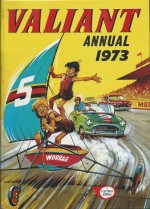
By various (Fleetway)
Retroactively awarded ISBN: 978-0-85037-033-1
Valiant was conceived as a “Boy Paper†in 1962 as the British comics industry struggled to cope with the sudden importation of brash, flashy, full-colour comics from America. A weekly anthology concentrating on adventure features and offering a constantly changing arena of action, the magazine was the company’s most successful title for over a decade and absorbed many less successful periodicals between its launch and eventual amalgamation into new-styled, hugely popular Battle Picture Weekly in 1976.
There were 21 Annuals between 1964 to 1985, combining original strips with prose stories; sports, science and general interest features; short humour strips and – increasingly from the 1970s onwards – reformatted reprints from IPC/Fleetway’s vast back catalogue.
From their creative heyday (this book would have been on sale from the end of August 1972) and sporting a magical Mike Western cover, the all-boys excitement begins with ‘The Sea Warriors’: an illustrated historical feature on the numerous vessels to carry the name “Valiantâ€.
‘The Wild Wonders’ (Western and probably Tom Tully on script) kicks off the comics capers with a tale of Rick and Charlie Wilde and their long-suffering guardian Mike Flynn. Shipwrecked on remote Worrag Island in the Hebrides, the toddlers were raised by animals and survived to become almost superhuman specimens. When rescued by Olympic swimmer Mike they became sporting sensations able to out-compete most adult athletes in any discipline. They could also talk to animals.
Here they save the seaside resort of Frilsea from a band of marauding thugs and bikers in a splendidly anarchic romp after which ‘The Tuffs of Terror Island’ finds four boys trapped on a tropical paradise filled with giant animals with only friendly caveman Urrg to help them survive.
The long-running serial strip originated in Lion, drawn by Tony Coleman, but I suspect this one-off, featuring the hunt for a colossal and nutritious cassowary egg, has been handled by a very talented Spanish ghost-illustrator.
Seagoing simpleton ‘Wacker’ (originally “Elmer†when running in Buster) has pet problems before the iconic ‘Captain Hurricane’ (written by Scott Goodall or Jon Rose) makes his first appearance, single-handedly crushing the Japanese in Burma whilst his hardworking batman Maggot Malone sets about ending a food shortage caused by black marketeers…
A brace of comedy capers – ‘The Crows’ by the amazingly prolific Reg Parlett and the astoundingly slick and wonderful ‘Sporty’ by Reg (Sporting Sam) Wootton – segues neatly into prose skiing/smuggler thriller ‘Diamond Run’ with illustrations by Eric Bradbury after which frenetic trend-chasers ‘The Nutts’ cause aerial angst in a superb yarn from Spanish cartoonist Ãngel Nadal.
His comedic prowess is also on show in western spoof ‘Hymer Loafer – the Tiredest Man in Tennessee’ whose stagecoach lowjinks here exasperate his hard working mother. The strip was a frequently recycled feature previously entitled Lazy Sprockett and Kip Carson when it appeared in Buster.
A photo-packed essay on Olympic history, ‘The Greatest Games of All’ is followed by another maritime mirthquake with ‘Wacker (He’s All at Sea)’ before a true veteran aviator takes to the skies in ‘Battler Britton and the Flying Fortress’ (possibly illustrated by Italian artist Giorgio Trevisan) wherein the air ace has to retrieve a new bombsight from a downed bomber.
Clearing the palate is another Parlett rib-tickler starring ‘The Crows’ after which a full-colour section highlights period peril for ‘Janus Stark’. The epic “Incredible Adventures†of this fantastically innovative and successful strip were created by Tully for the relaunch of Smash in 1969, with the majority of the art by Francisco Solano Lopez’s studio.
The eerie moodiness of the weekly well suited the story of a foundling who grew up in a grim orphanage only to become the greatest escapologist of the Victorian age. The “Man with Rubber Bones†also had his own ideas about justice, and would joyously sort out scoundrels the Law couldn’t or wouldn’t touch.
A number of creators worked on this feature which survived until the downsizing of the publisher’s comics division in 1975 – and even beyond. Stark escaped oblivion when the series was continued in France – even unto Janus’s eventual death and succession by his son.
Here the monochrome murk gives way to stunning sunlit scenes as the escapologist travels to Egypt, solves the secret of the pyramids and foils tomb-robbers in a fast-paced romp painted by Solano Lopez or possibly Carlos Cruz.
A football-themed Wootton ‘Sporty’ precedes an outdated and rather un-PC selection of gags dubbed ‘Injun Antics’ after which strange facts are recounted in ‘Well Fancy That’ and Leo Baxendale’s ‘The Swots and the Blots’ (possibly ghosted by Mike Lacey) renew their cataclysmic class wars…
A prose tale of ‘Captain Hurricane’ finds the mighty Marine in France thumping “Krauts†and facing off against a steam engine before a recycled and reformatted ‘Kelly’s Eye’ serial pits the indestructible troubleshooter against vampires and a sinister slave-taking mastermind…
The much-loved, long-running strip featured ordinary, decent bloke Tim Kelly who came into possession of the mystical “Eye of Zoltec†gem which kept him free from all harm as long as held on to it. You won’t be surprised to discover that due to the demands of weekly boys’ adventures, Tim lost the infernal thing pretty darned often – and always at the most inopportune moment…
The spectacular artwork of Solano Lopez was the major draw of this series, with Tully and Goodall the usual scripters.
Nadal’s ‘Hymer Loafer’ then stops the trains from running on time – or at all – after which unlikely survivor ‘Billy Bunter’ (Parlett) again overcomes incredible odds to fill his prodigious tum and ‘The Sea Warriors’ reveal the story of HMS Hermes with ‘Wacker’ sustaining the naval theme whilst playing hob with ships’ figureheads…
One of the most fondly remembered British strips of all time is the startlingly beautiful Steel Claw. From 1962- 1973 Jesús Blasco and his small family studio enthralled the nation’s children illustrating the breakneck adventures of scientist, adventurer, spy and even costumed superhero Louis Crandell. Initially written by novelist Ken Bulmer, the majority of the character’s career was scripted by Tully.
Here ‘The Return of the Claw’ offers a superbly illustrated prose drama wherein Crandell has to recover a stolen nuclear missile and ends up trapped in a sinister carnival…
One more funny flight of ‘The Crows’ leads to a full-colour extended outing for gypsy football savant ‘Raven on the Wing’ (Solano Lopez studio) as the wonder boy suffers a loss of form whilst in France and tribal mystic Morag has to invoke her uncanny powers to set him right…
An hilarious dalliance with man-powered flight for ‘The Nutts’ is followed by a photo-essay ‘Sporting Roundabout’, games pages exposing ‘Magic Secrets’ and a fact-feature of astronauts and ‘Star Transportation’ before the frankly bizarre ‘Yellowknife of the Yard’ stars in a text tale (with illustrations by Douglas Maxted?) fighting the depredations of flamboyant mastermind the Crime Master as he confounds the regular Metropolitan constabulary…
A gag-packed selection of ‘Sporting Smiles’ precedes another ‘Billy Bunter’ tale after which Henry Nobbins tries his hand big game hunting in Africa…
Light-hearted everyman ‘His Sporting Lordship’ was one of the most popular strips of the era. Beginning in Smash! it survived merger with Valiant in 1971 and only died just before the comic itself did.
Nobbins was a labourer on a building site when he unexpectedly inherited five million pounds and the title of Earl of Ranworth. Unfortunately, he couldn’t touch the cash until he had restored the family’s sporting reputation by winning the championships, prizes and awards that his forebears had held in times past…
Further complicating the issue was rival claimant Parkinson who, with henchman Fred Bloggs, attempt to sabotage each attempt. Luckily the new Earl was ably assisted by his canny and cunning butler Jarvis…
The capable manservant had his hands full in this tale (art possibly by Douglas Maxted) as Henry strives to bring back a live lion for the local zoo with Parkinson and Bloggs on wicked top form…
HMS Kent is the final subject of the ‘The Sea Warriors’ feature whilst ‘Who Is It?’ tests the readers’ knowledge of sporting stars after which the seasonal bonanza concludes with a stellar fantasy (illustrated by Luis Bermejo?) as teenager ‘Jon of the Jungle’ and his man-ape ally Zim travel back to Africa only to have their plane crash onto a lost plateau where dinosaurs, cave men and even worse monsters still battle for survival…
Eclectic, wide-ranging and always of majestically high quality, this blend of fact, fiction, fun and thrills is a splendid evocation of lost days of joy and wonder. We may not be making books like this anymore but at least they’re still relatively easy to track down. Of course what’s really needed is for some sagacious publisher to start re-issuing them…
© IPC Magazines Ltd., 1972
